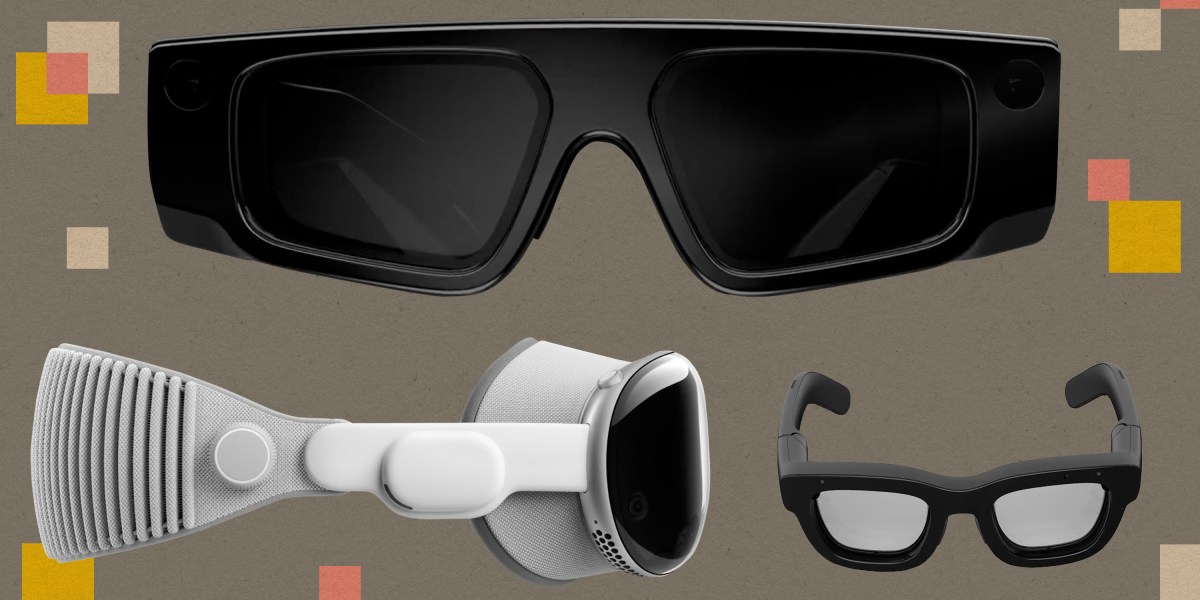He has reason to be optimistic, though: Meta is currently ahead of its competition thanks to the success of the Ray-Ban Meta smart glasses—the company sold more than 1 million units last year. It also is preparing to roll out new styles thanks to a partnership with Oakley, which, like Ray-Ban, is under the EssilorLuxottica umbrella of brands. And while its current second-generation specs can’t show its wearer digital data and notifications, a third version complete with a small display is due for release this year, according to the Financial Times. The company is also reportedly working on a lighter, more advanced version of its Orion AR glasses, dubbed Artemis, that could go on sale as early as 2027, Bloomberg reports.
Adding display capabilities will put the Ray-Ban Meta glasses on equal footing with Google’s unnamed Android XR glasses project, which sports an in-lens display (the company has not yet announced a definite release date). The prototype the company demoed to journalists in September featured a version of its AI chatbot Gemini, and much they way Google built its Android OS to run on smartphones made by third parties, its Android XR software will eventually run on smart glasses made by other companies as well as its own.
These two major players are competing to bring face-mounted AI to the masses in a race that’s bound to intensify, adds Rosenberg—especially given that both Zuckerberg and Google cofounder Sergey Brin have called smart glasses the “perfect” hardware for AI. “Google and Meta are really the big tech companies that are furthest ahead in the AI space on their own. They’re very well positioned,” he says. “This is not just augmenting your world, it’s augmenting your brain.”
It’s getting easier to make smart glasses—but it’s still hard to get them right
When the AR gaming company Niantic’s Michael Miller walked around CES, the gigantic consumer electronics exhibition that takes over Las Vegas each January, he says he was struck by the number of smaller companies developing their own glasses and systems to run on them, including Chinese brands DreamSmart, Thunderbird, and Rokid. While it’s still not a cheap endeavor—a business would probably need a couple of million dollars in investment to get a prototype off the ground, he says—it demonstrates that the future of the sector won’t depend on Big Tech alone.
“On a hardware and software level, the barrier to entry has become very low,” says Miller, the augmented reality hardware lead at Niantic, which has partnered with Meta, Snap, and Magic Leap, among others. “But turning it into a viable consumer product is still tough. Meta caught the biggest fish in this world, and so they benefit from the Ray-Ban brand. It’s hard to sell glasses when you’re an unknown brand.”
That’s why it’s likely ambitious smart glasses makers in countries like Japan and China will increasingly partner with eyewear companies known locally for creating desirable frames, generating momentum in their home markets before expanding elsewhere, he suggests.
More developers will start building for these devices
These smaller players will also have an important role in creating new experiences for wearers of smart glasses. A big part of smart glasses’ usefulness hinges on their ability to send and receive information from a wearer’s smartphone—and third-party developers’ interest in building apps that run on them. The more the public can do with their glasses, the more likely they are to buy them.



